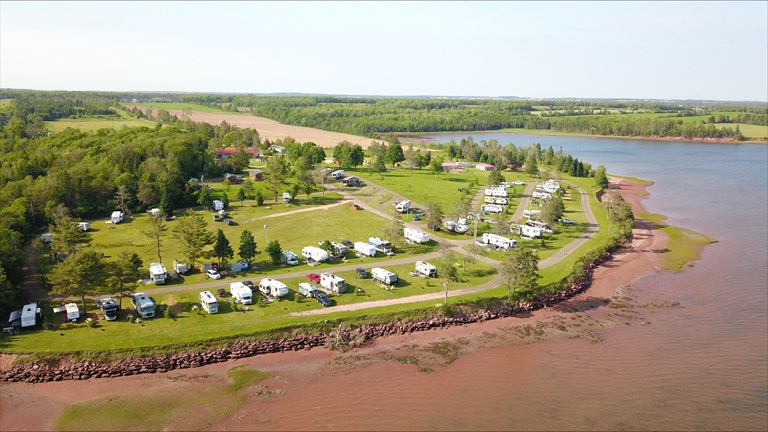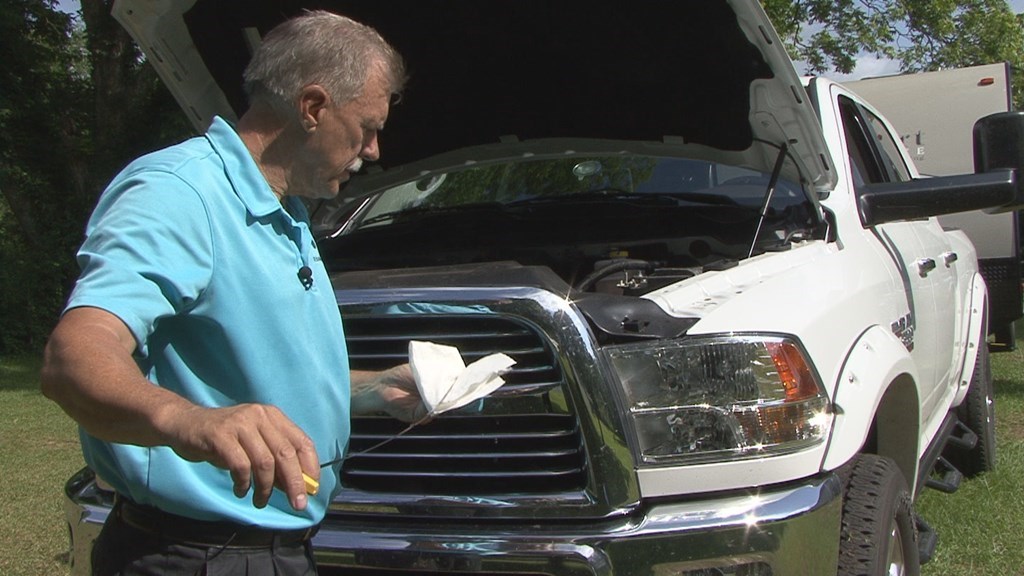Your cart is empty!
Make checkout easy by booking all your reservations at once. Add your sites from different campgrounds into your shopping cart* and then choose checkout.


Hot temperatures can take a toll on your RV, inside and out. Below, RV expert Mark Polk shares 10 hot weather RV preventive maintenance checks to help make sure you and your RV are ready to deal with the summer heat. Let’s start outside the RV.
It doesn’t matter if it’s a motorized RV or a truck towing a trailer, the vehicle needs to be ready for the heat. Hot summer temperatures affect the vehicle’s tires, cooling system and the transmission. If the vehicle isn’t prepared for hot temperatures there is a possibility you won’t reach your camping destination.
For starters it’s a good idea to check all the fluid levels in the vehicle and make sure all service intervals are followed. This includes generators too. Engine oil lubricates moving parts and helps components run cooler. When the temperature increases, the engine, transmission and axles are subjected to more heat than normal. Used oil and transmission fluid loses its lubricating qualities and the ability to help keep moving parts cool. Replacing fluids and filters can prevent heat related problems with your vehicles drive-line components.
Tires are directly affected by hot temperatures, especially underinflated tires. An underinflated tire creates a tremendous amount of heat and when you factor in hot summer temperatures the result can be disastrous. Inflate the tire pressure based on the load, and if a tire is overloaded try to redistribute some weight to correct the problem. Always check and adjust tire pressure when the tires are cold, and/or before traveling more than one mile.
Hot temperatures affect a hot running engine. The vehicle’s cooling system is designed to prevent the heat producing engine from overheating and quite possibly seizing up. If you don’t maintain the vehicle’s cooling system rust, scale and corrosion build-up in the radiator, water pump and engine coolant passages resulting in an overheated engine. Flushing the cooling system and replacing antifreeze at scheduled intervals can save your engine. Don’t forget to inspect the radiator and heater hoses too. Soft and/or brittle hoses can indicate potential problems.
When temperatures increase lead acid battery life decreases. Heat is a battery’s enemy. Hot temperatures contribute to battery corrosion and to water evaporating from the electrolyte. Keep the battery connections clean and during hot weather or periods of high usage check the battery frequently. Checking the water levels and adding distilled water as required can save your engine starting battery and your RV batteries.
Caution: When working on batteries remove any jewelry, wear protective glasses and gloves, and avoid getting battery acid on your skin or clothing. If you are not comfortable working on or around batteries have the work done by a qualified repair facility.
Now that the vehicle is ready for the hot summer temperatures we can concentrate on staying cool when we arrive at our destination. Here are some more helpful hot weather camping tips.
Strategically park your RV to take advantage of any shade that is available, especially on the side where the refrigerator vent is located. Don’t be afraid to ask for a shady site when you check-in at the campground. This will not only help keep the RV cool, but your refrigerator and roof air conditioner will work more efficiently too.
You can improve your air conditioners efficiency by keeping the A/C filters clean. In most cases you can wash the filters in warm soapy water, rinse thoroughly and allow them to dry before reinstalling. Another option is to clean the filters using a small hand held vacuum cleaner. I recommend you keep a new set of filters on hand in the event the old ones have seen better days.
Use your main patio awning and any window awnings to assist in keeping the RV cool. In addition to using the awnings use your window blinds, or day/night shades to help keep the sun out and the cooler air inside. Proper ventilation helps prevent excess heat in your RV too. You can install vent covers, like Maxx Air vent covers, over the roof vents to allow for ventilation and air circulation. They are inexpensive, easy to install and they let the fresh air in, even when it’s raining.
Campground voltage can fluctuate, especially during the hot summer months when all the campers are running their air conditioners. You should use a surge protector designed to protect your RV from improper wiring and in the event that voltage drops below 105-volts or spikes above 130-volts.
RV refrigerators are affected by outside temperatures too. To help the refrigerator work more effectively in hot weather try parking the RV with the side the refrigerator is on in the shade. Leave room between the foods for air to circulate. Avoid leaving the refrigerator or freezer door open for extended periods of time and use an inexpensive battery-operated refrigerator fan to help circulate air.
Well there you have it, 10 quick and easy steps you can take to help prepare your RV for hot summer camping trips inside and out.
To learn more about how everything in your RV works check out RV Education 101’s RV Online Training Courses.
KOA’s resident RV expert, Mark Polk, and his wife Dawn started RV Education 101 in 1999. Since that time RV Education 101 has helped educate millions of RV owners and RV enthusiasts on how to properly and safely use and maintain their RV. Mark’s favorite past times are RVing in their 35-foot Type A motorhome, and restoring vintage RVs, classic cars and trucks. For more information on how to learn about RVs the easy way, visit RV Education 101. Be sure to check out their RV Online Training Site too!
That doesn't mean this area has to always be empty. When you start reviewing camping options, your history will display here to help compare sites and find the best stay. You will be able to share your stay information with friends or family and save it for a later time if you have a KOA Account.
Make checkout easy by booking all your reservations at once. Add your sites from different campgrounds into your shopping cart* and then choose checkout.